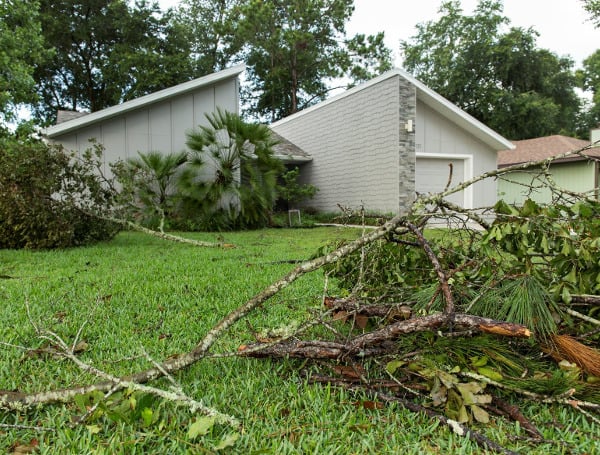In the eye of hurricane season, you need hardy trees that can withstand the strong winds that come with the storms – and which can topple trees.
That’s why University of Florida tree scientists Ryan Klein and Andrew Koeser study the variables that can lead to tree failure and how to make tree risk assessments more accurate and reproducible.
Trees can “fail” in many ways, including all or parts of the tree falling and hitting structures, vehicles, or humans. A well-trained arborist can assess your tree and recommend mitigation that can help to eliminate defects and promote healthy and more structurally sound trees.
“All trees near people and property pose some level of risk, should all or parts of them fall,” said Klein, an assistant professor of environmental horticulture at the UF Institute of Food and Agricultural Sciences. “When tree-care professionals assess the risk associated with trees, they commonly evaluate the likelihood of the tree failing and the associated consequences.”
Arborists can quantify the likelihood of impact and consequences of tree failure. But rating a tree’s likelihood of failure remains subjective. Klein and Koeser — a UF/IFAS associate professor of environmental horticulture at the Gulf Coast Research and Education Center — are trying to remove that subjectivity.
Among other criteria, arborists need to know a tree’s size and species, presence of defects – and many other details – to determine if it might fail.
In their newest study, Klein, Koeser, and others surveyed 87 professionals at a national arborists’ conference. They asked them to look at defective tree parts and tell — with their naked eyes — the diameter of the tree part.
Then, researchers asked the arborists to rate the potential consequences of the parts of trees failing. That rating – “negligible,” “minor,” “significant” or “severe” — reflects how likely the branch is to
hurt people and property in its path when it falls. About 75% of the participating arborists accurately assessed the likelihood of the trees to fail and the potential impacts once the tree topples.
From that finding, Klein gives this takeaway from the study: By adding ratings for tree size and fall distances to common tree assessments, we could help increase the accuracy and reproducibility of tree risk assessments and make them less subjective.
“Currently, tree-risk assessments can vary between assessors,” he said. “The best way to avoid some of this variability is to vet the tree care professionals that you seek to hire to ensure that they have the proper training and experience to perform a tree risk assessment. Being proactive with your tree maintenance, rather than waiting for a major tree-related issue, will save you money and help you prolong the benefits associated with the tree – while still minimizing any potential risk of the tree falling.”
Click here to find a certified arborist to inspect your tree.
Support journalism by clicking here to our GoFundMe or sign up for our free newsletter by clicking here
Android Users, Click Here To Download The Free Press App And Never Miss A Story. It’s Free And Coming To Apple Users Soon

